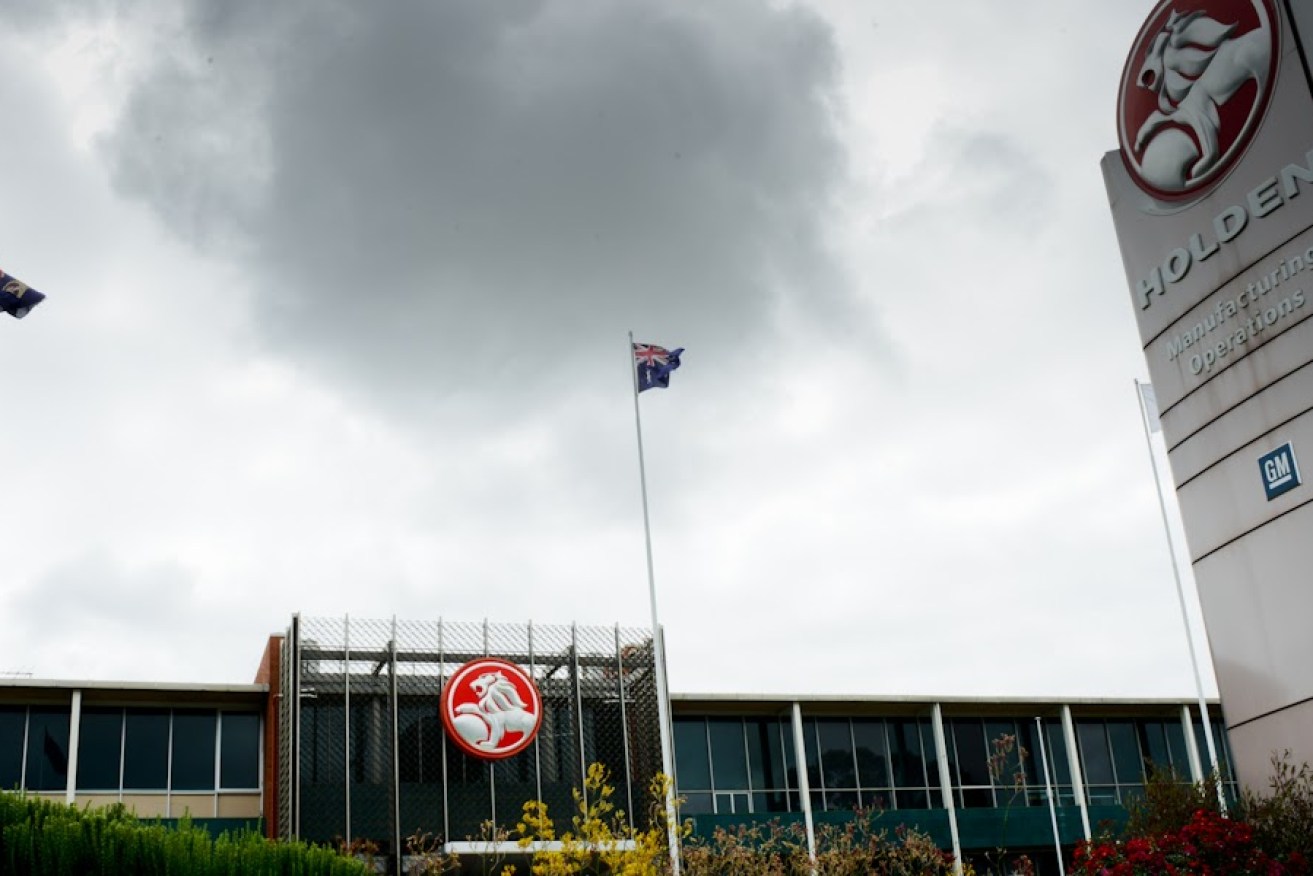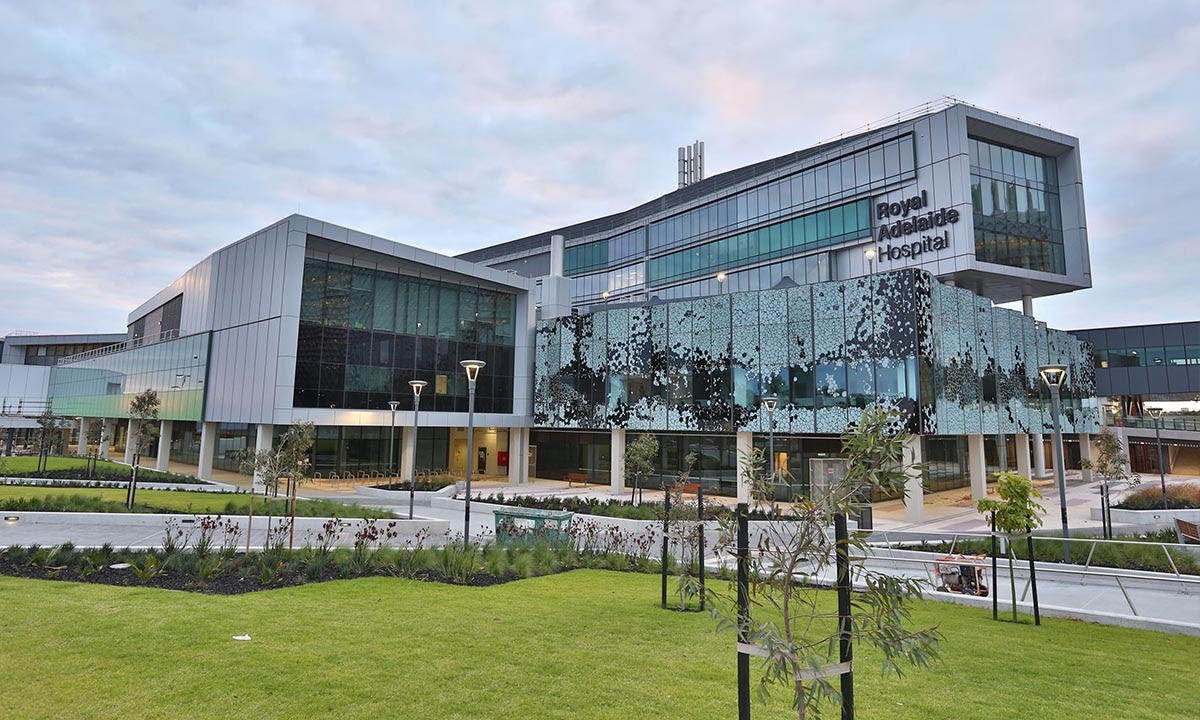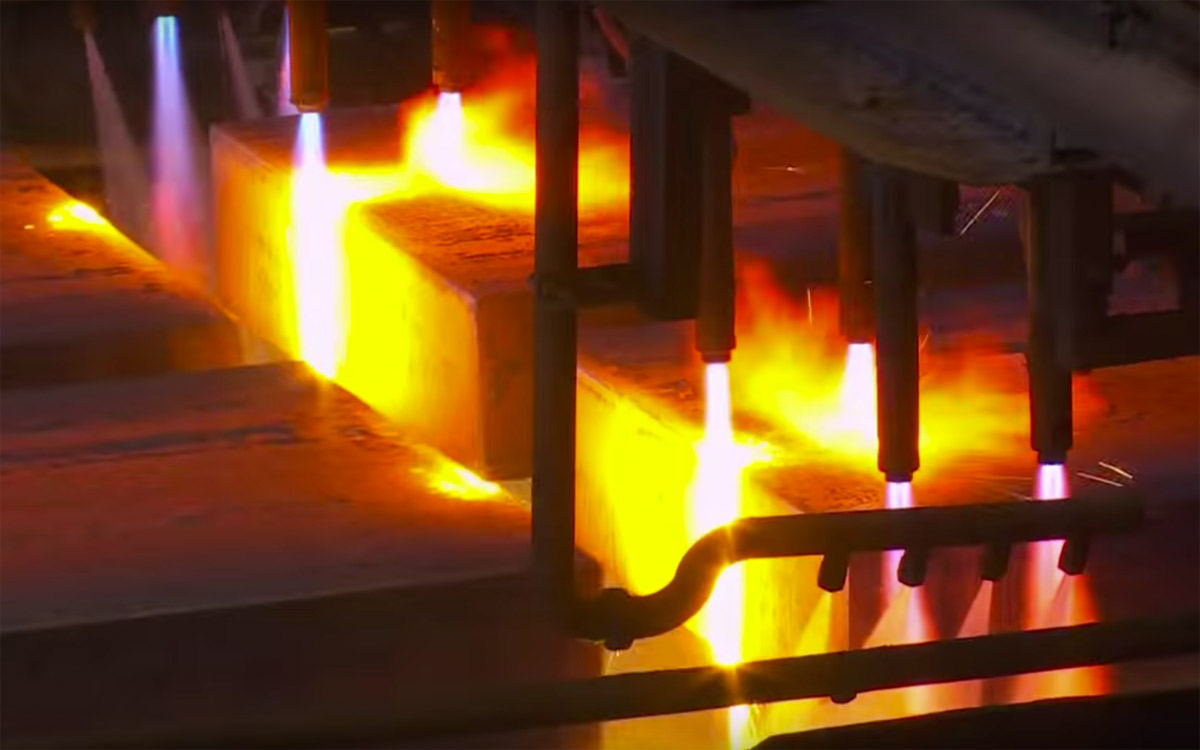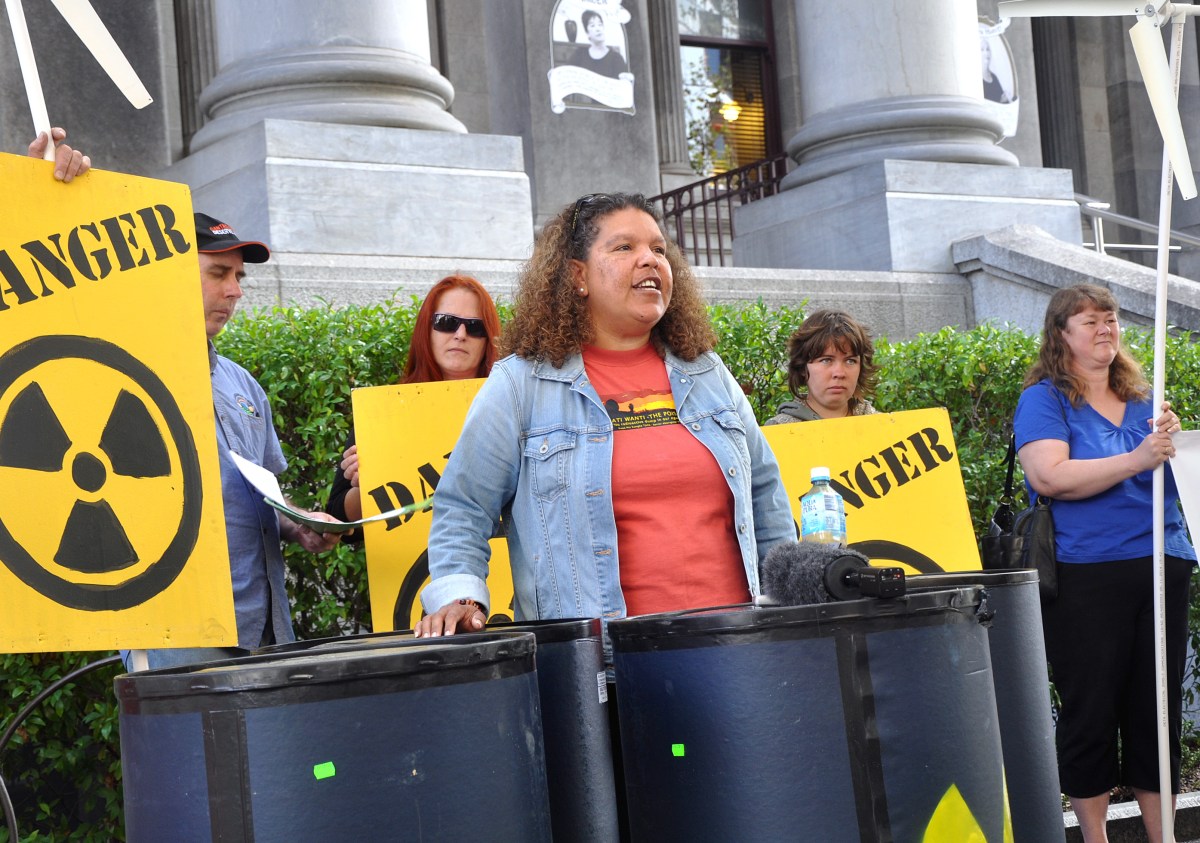Searching for an economic solution for South Australia
In this piece republished from State of Hope, the 55th edition of Griffith Review, John Spoehr examines how South Australia can find a way through the maze of economic challenges that confronts us.

In September 2016, South Australia was buffeted by the most ferocious storm in half a century. Apocalyptic clouds gathered as thousands of lightning strikes hit the saturated landscape.
The nation watched the unfolding crisis as an intense low-pressure system, two tornadoes, flooding rains and high tides demonstrated nature’s raw and unforgiving energy. Cyclonic winds felled transmission towers in the north, triggering a blackout that plunged the state into darkness. Meanwhile, torrential rains threatened flash flooding, provoking two days of collective trepidation as swollen rivers broke their banks, destroying crops and inundating houses.
The blackout was met with incredulity, triggering a political storm centred on the state’s reliance on wind-energy generation. That transmission towers lay strewn in the landscape was an inconvenient truth – the power of wind rather than wind power was the problem. It was a cruel visitation in a state already buffeted by economic headwinds.
South Australia enters 2017 facing mass layoffs in the automotive manufacturing industry and the potential closure of the local steel industry. These two shocks combined threaten to obliterate more than 25,000 jobs.
With economic growth expected to remain subdued over the remainder of the decade, there were growing fears in late 2016 that unemployment and underemployment would rise sharply, exceeding levels reached in South Australia during the global financial crisis (GFC). While the GFC inflicted great economic damage and hardship internationally, Australia and SA fared much better than most expected.
In September 2008, then Premier Mike Rann boasted that careful management, and continued growth in mining, meant that unemployment fell to 4.4%. Rarely does Australia outperform the rest of the world during global economic crises, but the early adoption of stimulus measures, rather than austerity, bolstered investment and employment at a critical time.
While unemployment rose significantly in following years, as plans to open new mines were put on hold, it remained well below the frightening heights reached during the recessions of the 1980s and 1990s. The national unemployment rate stayed below, in trend terms, while SA’s unemployment peaked at 8.2%, a fifteen-year high, in July 2015. By August 2016 it had declined to 6.6%. This was exceptional by international standards.
Australia emerged less scathed by the global economic storm than many other parts of the world, but the high Australian dollar acted like a wrecking ball on SA’s manufacturing sector, and the collapse in commodity prices brought about a dramatic end to what was a modest mining exploration boom. The state lost thousands of manufacturing jobs during this period – taking total losses to around 25,000 over the decade. The closure of the automotive manufacturing industry follows this, threatening a period of slower growth and rising unemployment unless additional job-rich investment measures are put in place.
While so many other nations were plunged into deep recession by the global financial crisis, Australia avoided the calamity through both stimulus and sustained Chinese demand for the nation’s mineral resources. The 2008–09 Rudd government’s A$42 billion stimulus package did what it needed to do – fill the investment gap created by the sharp decline in private investment at that time. Without it, it’s certain that unemployment would have risen sharply and remained high for many years. By contrast, those nations that pursued austerity policies, notably Greece and Spain, experienced chronically high rates of unemployment and underemployment, creating great social and economic hardship for millions.
With Australia’s response to the global financial crisis fresh in the minds of some, and the closure of General Motors-Holden looming, federal policymakers have felt compelled to act more boldly to prevent escalating unemployment and hardship in the wake of the closure. With investment of more than A$1.3 billion per year lost from the SA economy as a result, new projects are needed to fill the gap and prevent unemployment rising in early 2018.
While the project to construct 12 new submarines in South Australia will generate early site preparation work, their manufacture is not likely to begin until the mid 2020s. Temporary work on the construction of offshore patrol vessels aims to keep the workforce intact until the submarine build gets underway.
The social and economic costs of responding parsimoniously to the automotive closure are high. South Australia goes into 2017 with a male unemployment rate of around 7%, and male full-time employment growth in reverse. This is a diabolical combination.
After peaking at around 365,000 in 2008, total male full-time employment is now around 336,000. It threatens to get much lower. During the 1990s recession it bottomed out at around 313,000.
So with male full-time employment in reverse, job prospects for men in particular are poor – both in terms of quantity and quality. All the recent growth in male employment has been part-time, so we can expect underemployment to rise sharply with the automotive closure given the lack of full-time employment growth in industries where men predominate. While continued growth in employment in service industries has underpinned rising female participation in the workforce, much of this growth has been in casual and part-time jobs, fuelling rising underemployment for women.
Employment growth in South Australia is largely concentrated in health, aged care and community services, providing limited opportunities for workers with decades of experience in manufacturing. For those who do successfully make the transition into the service sector, it is often into less secure part-time and casual jobs, fuelling the rise of underemployment. For many others the risk of unemployment is high.
Around one-third of retrenched manufacturing workers typically experience long-term unemployment after retrenchment, particularly during periods of slow growth. To avoid this it’s necessary to bring forward infrastructure and construction projects that provide much needed short-term employment opportunities while efforts are underway to accelerate the growth of more enduring jobs in areas where demand is strong. In other words, short-term job-rich stimulus needs to coincide with medium-term industrial transformation and diversification efforts in response to major shocks like the automotive closure.
The end of a boom in engineering and construction projects is compounding the poor jobs outlook. On the back of the 2009 stimulus package, substantial commitments to infrastructure expenditure by the state government boosted growth over the five years to 2016.
This included the new Royal Adelaide Hospital, which acted as a catalyst for investment in adjacent research and education buildings by the university sector. The great urban development that is taking place in the city of Adelaide will be transformative. Billions of dollars have been invested in a new health precinct, oval, light rail system and convention centre. This process of modernisation and invigoration has been accompanied by a significant increase in the residential population.
The bulk of this work is due for completion in 2017, when capital expenditure is expected to decline in the absence of new projects coming on stream. Agreement on a suite of new projects is urgently needed.

The new RAH and surrounding buildings will be transformative. But what comes next? Photo: Tony Lewis/InDaily
Setting up infrastructure in the state
Fortunately for South Australia, fear of an electoral backlash at the 2016 federal election appeared to motivate both the Abbott and Turnbull federal governments to break a recent drought on jointly funded capital works projects. One of the last acts of Tony Abbott as prime minister was to announce a commitment of A$790 million to the one billion dollar Northern Connector road project, a 43 kilometre freeway that will link Gawler and Regency Park. This was a breakthrough in federal-state relations at the time, opening the door for further possible infrastructure commitments from Canberra.
Of course, South Australia could choose to fund additional infrastructure projects through increased borrowings, given record low interest rates. Whatever the funding source, the immediate imperative is to sustain high levels of infrastructure expenditure in an effort to contain rising unemployment when the full impact of the automotive manufacturing closure hits in late 2017. This of course needs to coincide with efforts to accelerate the diversification of the South Australian economy into areas where domestic and global demand is strong.
Having made some progress in funding negotiations with the federal government, the SA government identified a suite of infrastructure projects for the federal government to consider co-investing in during the 2016 federal election. While no agreements have been struck to fund any new projects, the multi-billion dollar package of transport and infrastructure projects is not likely to disappear off the radar altogether, particularly with a state election looming. The state government will need to be an aggressive investment partner to get the package of projects off the ground.
Industries struggling and closing down in 2017
Having endured the ravages of extreme weather, SA faces an economic storm when General Motors-Holden and much of its supply chain closes in late 2017. This will be a more serious shock than the closure of Mitsubishi Motors in 2008 because it comes at a more difficult time in the state’s economic history, and will impact the entire automotive supply chain.
Estimates of the direct and indirect job losses in SA resulting from the closure have been as high as 24,000, depending on the assumptions used. While some strategies have been put in place by the state and federal governments to support workers and companies, the closure leaves a A$1.3 billion per annum investment hole in SA. While progress was being made towards filling this hole, there is a high risk that unemployment and underemployment will still rise.
SA’s economic woes were compounded when the struggling Whyalla steelworks was placed into voluntary administration in 2016. Whyalla is a quintessential steel town, home to about 22,000 people.
Around a quarter of Whyalla’s 11,000 strong workforce is employed by Arrium’s steel manufacturing and mining operations. Closure of both would fuel a vicious cycle of decline in the absence of offsetting investments like expansion of BHP Billiton’s Olympic Dam operations.
Nothing short of transformative change will ensure the ageing steelworks’ future. This is likely to include the need for a major upgrade of ageing steel furnaces and the modernisation of systems to enable the manufacture of higher value steel products and a diversified product range. It will also require patient investment by the South Australian and federal governments to enable the plant to survive – something policymakers across the political divide appear to agree on.
Given the federal government’s response to the threatened closure of the automotive manufacturing industry, it was hard to imagine any substantial assistance to the ailing steel industry. Fear of a backlash at the 2016 federal election appeared to elicit a more pragmatic response.

Steel being manufactured at Arrium’s Whyalla steelworks.
In March 2016, the government announced that it would bring forward the upgrade of the Adelaide-to-Tarcoola railway line, directing a major steel order to the Whyalla steelworks. It confirmed that it would also be willing to provide a loan to Arrium as part of a joint state-federal government rescue plan. This stood in stark contrast to the combative approach taken during the height of the automotive crisis three years earlier when Tony Abbott declared he would “not chase them [GMH] down the road waving a blank cheque at them”.
With all the difficulties facing SA, the Turnbull government was under enormous electoral pressure from the surging Nick Xenophon party and a more united Labor Party to deliver some good economic news in the 2016 campaign. Having supported the Northern Connector, South Australians eagerly awaited the decision about where the nation’s new fleet of submarines would be manufactured.
Hopes faded in late 2014 that SA would remain the centre for naval shipbuilding when former federal Liberal defence minister David Johnston declared that he wouldn’t trust the Australian Submarine Corporation (ASC) “to build a canoe”. It proved to be a major error of judgement on his part when Prime Minister Tony Abbott sacked him from the ministry.
The day after Anzac Day 2016, Prime Minister Turnbull delivered welcome news to South Australian’s and South Australian Liberals worried about their flagging electoral prospects: French company DCNS was awarded the contract to design twelve new submarines to be built in Adelaide at a cost of around A$50 billion. In addition, the state would also be the base for the manufacture of offshore patrol vessels for two years before the project was transferred to Western Australia. These projects amount to a A$90 billion investment by Canberra in defence shipbuilding, enough to underwrite the defence manufacturing business for decades to come.
So long as a high proportion of the design, construction and sustainment work is undertaken locally, the submarine project has the potential to accelerate the transformation and modernisation of the manufacturing sector. Maritime defence projects – designing and building submarines – are among the most complex of engineering projects.
They require the development and application of advanced technologies by highly skilled workers. A network of sophisticated companies is needed to deliver and maintain a fleet of vessels that can endure incredibly demanding operational conditions for decades.
Creating the jobs to suit future industries
The great Swedish economist Gunnar Elliasson has argued that complex manufacturing projects like military aircraft and submarines represent “technical universities”, places where high value knowledge and skills are developed and successfully applied. Nothing can be taken for granted, however.
To extract the full benefit of these projects, it’s necessary to appreciate the value of complexity and put in place the required policies and practices to leverage the full range of opportunities that can flow from very large-scale knowledge-intensive projects.
Some of the institutional building blocks for extracting this value are in place in SA, including the Tonsley Innovation Precinct and Flinders University in Adelaide’s southern suburbs, the SA health and medical research precinct surrounding the new Royal Adelaide Hospital, the Waite Research Institute, Technology Park in Adelaide’s northern suburbs and the TechInSA bio-innovation precinct in Thebarton.
The successful implementation of highly complex defence projects relies on well-established global defence supply chains, dominated by the US, France, Spain, Germany, Sweden and Japan.
Locally owned defence electronics, systems integration and manufacturing companies play an important but ancillary role in all of this. While foreign players dominate the Australian defence industry, South Australia has developed foundational expertise and infrastructure to ensure that the state is able to play a major role in the delivery of ships for the Australian navy.
Without the ASC shipbuilding operations and Techport at Osborne, South Australia would have little to contribute. ASC has decades of experience in shipbuilding, delivering some highly sophisticated manufactured products, and the world-class facility at Osborne is able to draw on a highly experienced and skilled workforce.
Past experience with complex defence projects tells us that substantial economic benefit can be captured by harnessing so-called knowledge and technological spillovers – commercial applications of knowledge and technologies in the civilian sector. New and existing companies can benefit greatly from this, particularly where deliberate strategies identify and capture such spillovers.
One of the most likely is the exchange of high-value knowledge and skills among scientists and engineers, helping to accelerate both understanding and applications of advanced technologies such as 3D printing, nanotechnology and smart materials.
While many local jobs will flow from the shipbuilding projects, many more could be generated in industries such as medical devices, assistive technologies for the elderly and those with a disability, energy generation and storage, and autonomous vehicles and boats. Significant progress has been made in the medical and assistive-devices sector through the Medical Devices Partnering Program, run by the Medical Devices Research Institute at Flinders University.
Additional resources need to be invested in expanding and replicating the model, but this will take time. While the submarines won’t be in production until the 2020s, major site preparation and design work will generate short-term job opportunities, although not necessarily for those who are made redundant in the automotive sector.
The nuclear waste debate
While the search for economic Eldorados remains irresistible for politicians, few would have anticipated that the Jay Weatherill-led state Labor government would establish a Royal Commission into the nuclear industry. On 19 March 2015 the Premier did just that and commissioned Kevin Scarce AC, former governor, to investigate “the potential for increasing South Australia’s participation in the nuclear fuel cycle”.
The audacity of this was astounding, with no clear endgame declared. This was high stakes politics given the Labor Party’s historical opposition to nuclear power, processing and storage, and the premier’s ties to the left of the Labor Party.
Commissioner Scarce reported to the premier on 6 May 2016, dismissing nuclear energy generation and processing of uranium, but concluding that large-scale radioactive waste storage could deliver a significant economic benefit. This claim was contested by environmental groups, the Australia Institute and several unions. Putting aside the merits of the economic argument, it’s difficult to imagine the proposal will jump the bar of community support the state government has set itself to trigger a more detailed feasibility assessment.
Even Finland, which is well advanced in the construction of a waste storage facility, has indicated that it will not store other nations’ nuclear waste. It seems highly improbale that SA will become the international exception and take on nuclear waste from around the globe.

Karina Lester addresses an anti-nuclear protest outside Parliament House in Adelaide. Photo: AAP/Michael Ramsey
The premier made much of the need to get community agreement in order to further investigate the Royal Commission’s recommendations. In 2016, the state government commissioned the Orwellian sounding Democracy Co to implement a “citizen’s jury” to test the proposition: “in what circumstances could South Australia pursue the opportunity to store and dispose of nuclear waste from other countries?” Citizen’s juries have been used before in South Australia, but to resolve far less complex problems like how to reduce the numbers of unwanted animals, and how motorists and cyclists might share roads more safely.
The juries were a manifestation of the Weatherill government’s “consult and decide” approach to governance, an attempt to avoid accusations levelled at the government in the past of being insufficiently consultative. While most South Australians were not particularly interested in the nuclear waste debate, thinking it unlikely to lead to anything tangible, a relatively small group of influential individuals, including Kevin Scarce, chancellor of the University of Adelaide, mining industry leaders and some academics, were strong advocates for a nuclear industry in South Australia. Key figures in the Weatherill government, including former industry minister Tom Kenyon, along with former federal Liberal MP Sean Edwards, have been enthusiastic advocates.
In November 2016, the citizens jury delivered it verdict on the Royal Commission’s proposals. Two thirds of the jury of more than 300 participants rejected the proposal, stating that they did not want to see SA storing high-level nuclear waste “under any circumstances”. Despite their judgement, the premier continues to consider the nuclear waste storage proposal, stating the jury’s verdict is just one of a broad range of community views he needs to take into account before making a final judgement.
The worth of mining to the state
Despite a number of high profile mining and energy projects failing to get off the ground, hopes remain high that the sector will eventually deliver a substantial jobs and growth dividend. While the much-hyped A$30 billion expansion of the Olympic Dam by BHP Billiton was put on hold in late 2013, a scaled-down version of the project is likely to proceed when commodity prices are more favourable, and more cost-effective extraction methods are available.
Less likely to proceed is the search for oil in the Great Australian Bight, with BP walking away from a billion-dollar commitment to deep-water oil exploration. While the minerals and energy sector will be a significant contributor to export income and tax or royalty revenue, it’s not likely to generate the thousands of jobs needed to replace those lost in manufacturing, particularly given the growing use of automation. After rising to around 9,000 at the peak of the exploration and investment cycle, employment in the South Australian mining sector declined to just 6,000 in 2016.
South Australia’s jobs challenge is complicated by the revolutionary implications that new technologies have for the way we work. It forces a reconsideration of the employment growth potential of existing and new industries. While employment growth has always been impacted by technology, a new debate now rages about whether technologically induced job creation will be outpaced by job destruction flowing from automation and applications of artificial intelligence.
We have long been told that technology will generate more jobs than it displaces, but this is now much less certain. Existing technologies will automate many routine tasks, and more sophisticated jobs are now at risk as advances in artificial intelligence and machine learning are making it possible to also automate an increasing range of complex tasks such as medical diagnosis, debt risk assessment and human-robot interaction.
Some estimates suggest that more than 40% of all jobs are vulnerable to high levels of automation over the next decade. More recent research focusing on the automation of tasks rather than jobs suggests a much less dramatic outcome. Whatever measure you use, regions with industries that have a high proportion of jobs involving routine tasks will be significantly impacted. SA will not be immune from this.
While fears about disruption and automation are not without foundation, they tend to be technologically deterministic – overestimating both the pace of change and the relative advantages of automated solutions. There is little doubt that the current wave of technological innovations is truly transformative, particularly when paired with the power of digital technologies. Nanotechnology, biotechnology, photonics, 3D printing, artificial intelligence and simulation are among a suite of revolutionary technologies transforming industries and workplaces.
When applied holistically for the benefit of society, this new industrial revolution bristles with opportunities to build a more diversified, knowledge-based economy capable of generating rewarding, well-paid and secure jobs. Complex problem solving, creativity and design are foundational capabilities, alongside deep knowledge and critical insights from the social sciences, humanities, science, technology, engineering and mathematics.
Securing this knowledge-intensive social and economic development pathway will require sustained investment in the uptake and diffusion of technology by government and industry, along with the modernisation of social and physical infrastructure and the innovation ecosystem.
Interventions from agencies and organisations
Investment in modernising the Adelaide CBD has already delivered great benefits. Last year, The Economist Intelligence Unit ranked Adelaide the fifth most liveable city in the world. While the state government has done a great deal to modernise and invigorate the city, much more needs to be done, particularly in suburban Adelaide.
The benefits of nation-building investments in suburban and regional development in the postwar period and the 1970s have been exhausted. This needs to be remedied by targeted investment in modernisiation of the state’s suburban centres, particularly in Adelaide’s northern suburbs where significant population growth will be accommodated over decades to come.
A strategy to bring disparate policy agendas together is urgently needed. The state government needs to be a more aggressive driver of this, boosting the capacity and capability of its relatively meagerly resourced economic and industry development divisions within the Department of State Development (DSD) to lead the co-design of sophisticated sectoral strategies in collaboration with industry, universities, agencies and NGOs. The DSD once boasted the most sophisticated manufacturing strategy in the nation, Manufacturing Works.
Released in 2012, it was a blueprint for a more integrated and sophisticated approach to transforming manufacturing, increasing its complexity and global competitiveness. It needs to be refreshed and reinvigorated as part of a suite of strategies designed to accelerate industrial transformation and diversification in South Australian.
South Australia lacks well resourced economic and industry policy development capabilities in government, industry and academia. The DSD has limited capacity for economic development strategy and policy development. Meanwhile, the Economic Development Board has not renewed the substantial work it did on economic strategy in 2009.
The major industry associations – including Business SA and the Australian Industry Group along with Unions SA – make only modest contributions to economic development strategy, relying on the state government to play the lead role. Broadly speaking, SA lacks the sophisticated economic and industry strategy it needs to deal with the profound economic challenges it faces.
While the federal government made a contribution to this through its reviews of the South Australian and Victorian economies in 2013, the responses lacked grounding in a sophisticated national innovation policy and appreciation of the need for a more interventionist role for government in economic and industry development.
Innovation in South Australia
While the Turnbull government’s 2015 National Science and Innovation Agenda helped to fill the innovation-policy vacuum, real progress is slow. Significant institutional and cultural change is necessary to improve innovation performance, particularly in relation to the commercialisation of highly complex goods and services that sustain knowledge and skill-intensive employment.
This would go a long way to improving global competitiveness. National and state innovation-partnering programs are needed to support collaboration in areas with high growth potential like medical devices and assistive technologies, energy storage, prefabricated construction, and health and ageing services.
The one-off projects currently being funded by national funding schemes – including the Entrepreneurs Program, and the Australian Research Council and National Health and Medical Research Council – are important; they must be complemented by increased investment in grounded industry and community-linked research and development initiatives.
 We don’t yet have the right models in place for doing this in a sustained way in Australia, although there are good international examples to learn from: the German network of Fraunhofer institutes, and Finland’s VTT, point to ways to accelerate knowledge transfer and industrial transformation. Fraunhofer IAO Stuttgart has partnered with the Australian Industrial Transformation Institute at Flinders University on a series of industrial-transformation projects in assistive technology and changing demand for goods and services arising from population ageing. The state government could help to accelerate the development of these strategically important international collaborations through partnership arrangements to extend the capabilities of SA’s universities at a modest cost of around A$25 million over five years.
We don’t yet have the right models in place for doing this in a sustained way in Australia, although there are good international examples to learn from: the German network of Fraunhofer institutes, and Finland’s VTT, point to ways to accelerate knowledge transfer and industrial transformation. Fraunhofer IAO Stuttgart has partnered with the Australian Industrial Transformation Institute at Flinders University on a series of industrial-transformation projects in assistive technology and changing demand for goods and services arising from population ageing. The state government could help to accelerate the development of these strategically important international collaborations through partnership arrangements to extend the capabilities of SA’s universities at a modest cost of around A$25 million over five years.
While dark clouds gather on the economic horizon, the threat they pose could be minimised by job-rich stimulus measures to accelerate the growth of knowledge and design-intensive industries in response to both domestic and global demand, particularly from the Asia–Pacific region. At the same time, entrenched unemployment, growing underemployment, poverty and inequality must be confronted by well-integrated social and economic policies with the same commitment and vigour that we have seen in times of crisis when great storms, drought, economic shocks and recessions threaten hardship and suffering. South Australia must be well prepared and positioned to manage all of these challenges.
You can find more from the Griffith Review’s edition on South Australia here.
John Spoehr is Director of the Australian Industrial Transformation Institute at Flinders University.
This article was originally published on The Conversation. Read the original article.




